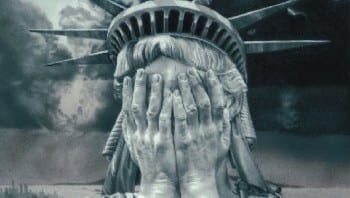The most educated countries in the world—take a wild guess.
More people access higher education today than ever before. One in three adults in developed countries held a college degree in 2012, a substantial increase from 2000 when just over one in five had attained such qualifications.
According to data recently released by the Organization for Co-operation and Development (OECD), more than half of Russian adults held tertiary degrees in 2012 — the equivalent of college degree in the United States — more than in any other country reviewed. Meanwhile, less than 4% of Chinese adults had tertiary qualifications in 2012, less than in any other country. 24/7 Wall St. reviewed the 10 countries with the highest proportion of adults holding a college degree.
The most educated populations tend to be in countries where tertiary education spending is among the highest. Tertiary education spending in six of the most educated countries was higher than the OECD average of $13,957. Spending on tertiary education in the U.S., for example, was $26,021 per student, by far the most in the world.
To identify the most educated countries in the world, 24/7 Wall St. reviewed the 10 countries with the highest proportions of residents aged 25 to 64 with a tertiary education in 2012. These data were included as part of the OECD’s 2014 Education at a Glance report. The countries considered included the 34 OECD member countries, and ten non-OECD nations. Included in the report were data on the proportion of adults completing various levels of education, unemployment rates, as well as public and private education expenditure. We also reviewed data from the OECD’s Survey of Adult Skills, which included advanced adult proficiency in both math and reading. The most current figures for education expenditure by country are from 2011.
These are the most educated countries in the world.
1) Russian Federation
More than 53% of Russian adults between the ages of 25 and 64 had some form of higher education in 2012, more than in any other country reviewed by the OECD. The country has reached this exceptional level of attainment despite spending among the least on tertiary education. Russia’s tertiary education expenditure was just $7,424 per student in 2010, roughly half the OECD average of $13,957. Russia was also one of just a few countries where education spending declined between 2008 and 2012.
2) Canada
3) Japan
Like the U.S., Korea, and the United Kingdom, private spending accounts for the vast majority of spending on tertiary education in Japan. While this can often lead to social inequalities, Schleicher explained that like most Asian countries, Japanese families are by and large willing to save money for their children’s educations. Strong education spending and participation in higher education does not necessarily translate to higher academic skills. In Japan, however, higher spending did lead to better learning outcomes, as more than 23% of adults performed at the highest level of literacy proficiency, nearly double the OECD average of 12%. Younger students also seem to be well-educated, as Japan reported exceptionally high Program for International Student Assessment (PISA) scores in mathematics in 2012.
4) Israel
Most 18-year old Israelis are subject to at least two years of mandatory military service. Perhaps as a result, country residents tend to complete higher education degrees later in life than in other countries. The compulsory conscription, however, has not lowered educational attainment rates, as 46% of Israeli adults had attained tertiary qualification in 2012. More than $11,500 was spent per student on tertiary education in 2011, lower than most other developed countries. Low education spending in Israel has resulted in low teacher salaries. New secondary teacher hires with minimum training were paid less than $19,000 in 2013, versus an OECD average of more than $32,000.
5) United States
In 2011, more than $26,000 was spent on tertiary education per student in the U.S., nearly double the OECD average of $13,957. Private expenditure in the form of tuition fees accounted for the majority of this spending. High education expenditures have paid off to some degree, as a large proportion of U.S. adults have very high levels of qualification. Because of the slow growth rates of the past decade, however, the U.S. has slipped behind many other nations. While spending per tertiary student between 2005 and 2011 increased by 10% across OECD countries on average, U.S. spending decreased over that time. And the U.S. was one of only six countries to cut public education spending between 2008 and 2011. Like other countries where education is controlled by regional authorities, tertiary attainment levels vary widely in the United States, from as little as 29% in Nevada, to as much as 71% in the District of Columbia.
24/7 WALL ST.: See the rest of the Top 10 most educated countries in the world
24/7 Wall St. is a USA TODAY content partner offering financial news and commentary. Its content is produced independently of USA TODAY.
![]() Nauseated by the
Nauseated by the
vile corporate media?
Had enough of their lies, escapism,
omissions and relentless manipulation?
Send a donation to
The Greanville Post–or
But be sure to support YOUR media.
If you don’t, who will?
